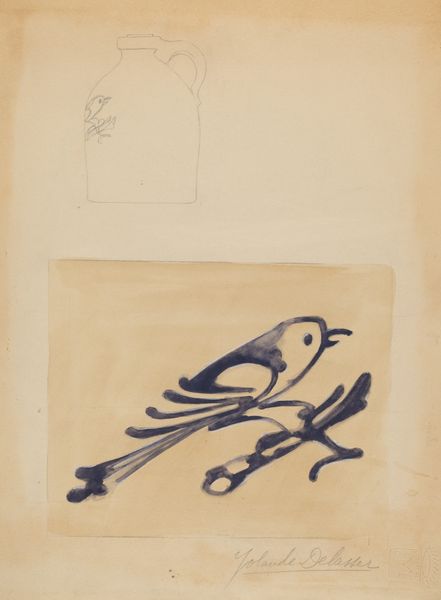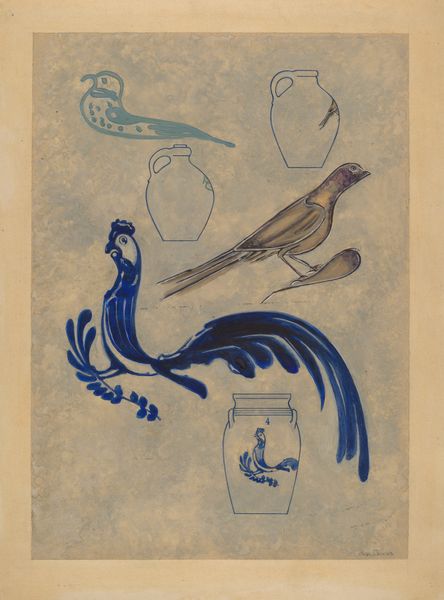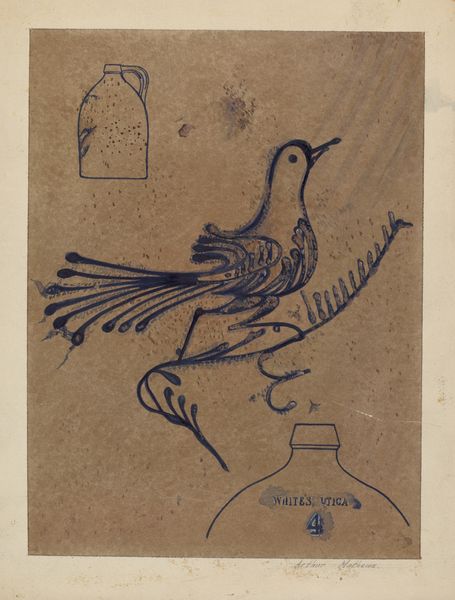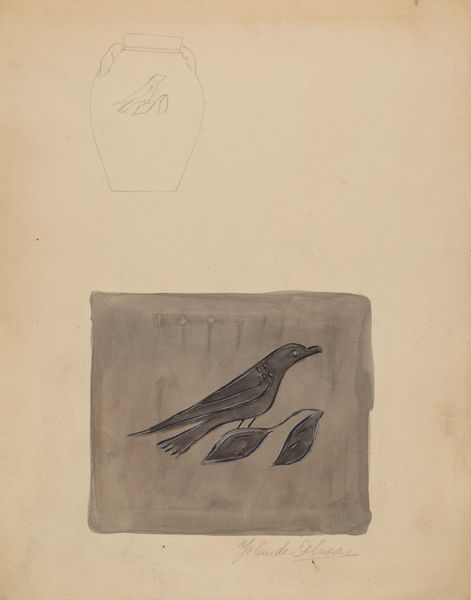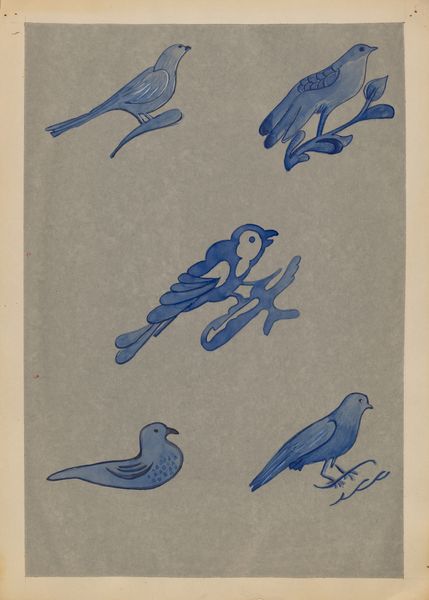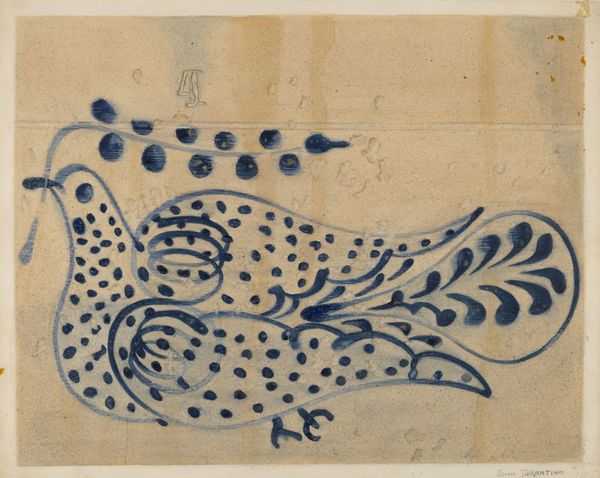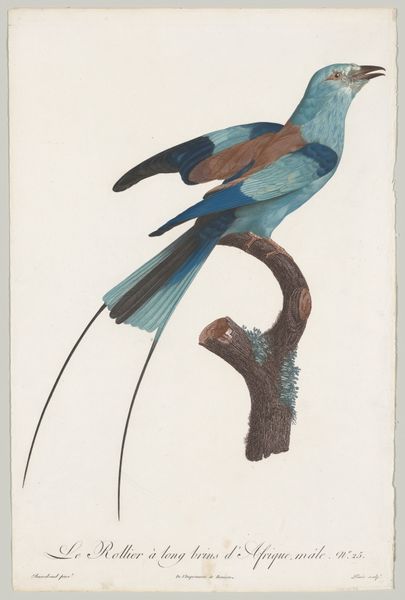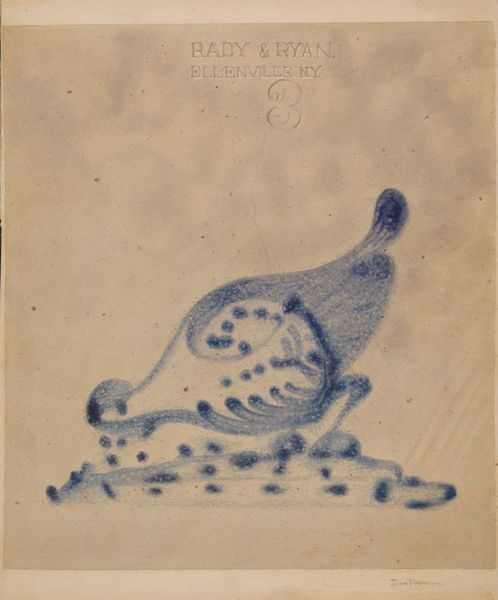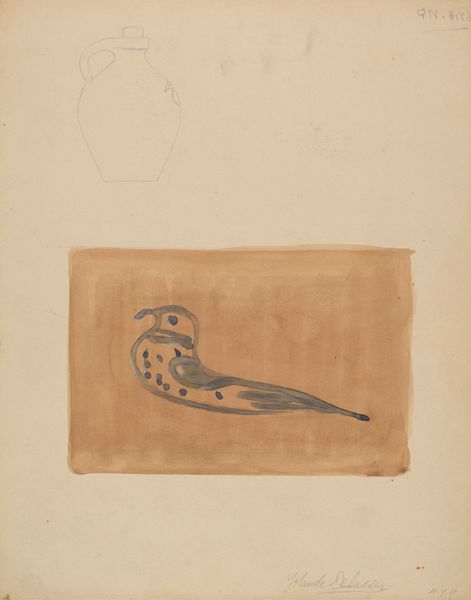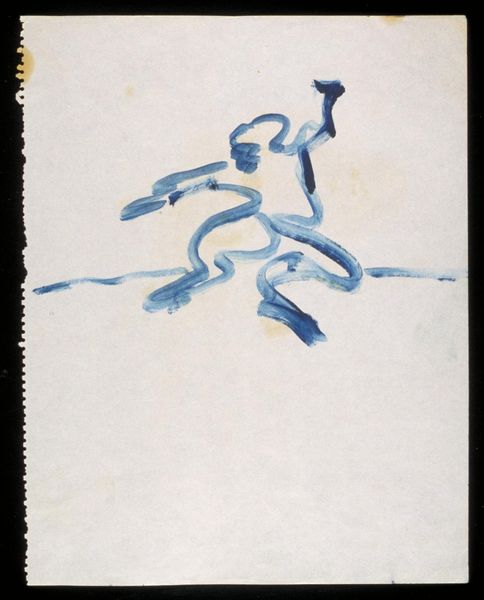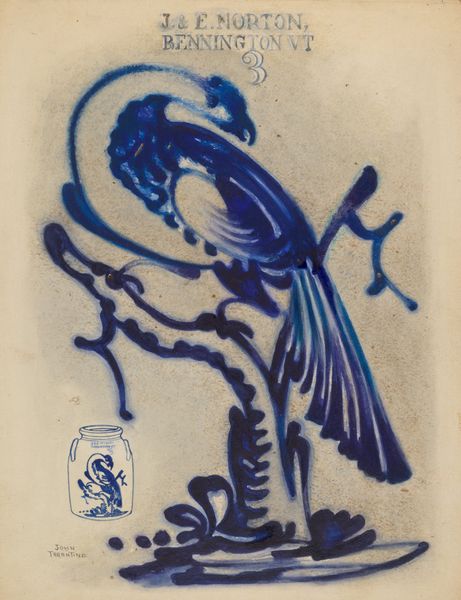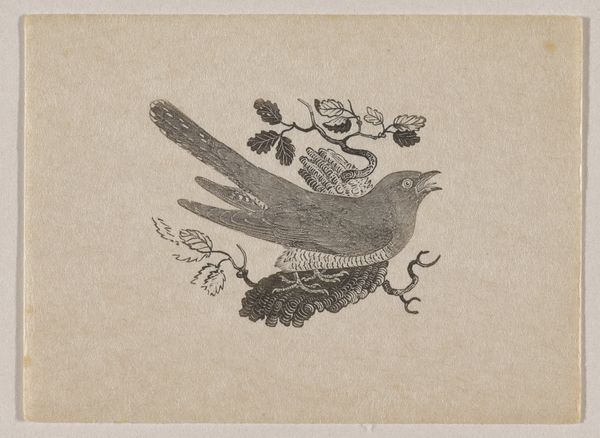
drawing, watercolor, ink
#
drawing
#
blue ink drawing
#
watercolor
#
ink
#
watercolour illustration
#
watercolor
Dimensions: overall: 28.7 x 22.5 cm (11 5/16 x 8 7/8 in.) Original IAD Object: 9 3/4" High 10 1/2" Dia(top) 7 1/4" Dia(base)
Copyright: National Gallery of Art: CC0 1.0
Curator: This is Yolande Delasser's "Crock," created circa 1936. The medium consists of watercolor and ink. Editor: Immediately, I see a charming, almost folk-art quality in this piece. The blue ink really pops against the softer watercolour wash. There is an undeniable air of simplicity that appeals to me. Curator: The simplicity, I believe, connects strongly with Delasser's socio-political context. This piece reflects the rise in popularity of artisanal craft. Consider how the idealization of rural labor spoke to anxieties during a period of widespread industrialization and urbanization. Editor: So, it's not just a pretty bird. I can appreciate it is functioning as a signifier. It is so interesting how this almost mimics ceramic decoration—blue against a pale ground. What were some of the motivations for artists at that time engaging in the crafts movement, can you delve into that further? Curator: Absolutely. This focus on crafts and "authentic" modes of living connects to anxieties related to mass production and displacement in a globalised world. Many, including women in particular, believed engagement with artisanal skills to offer avenues to redefine gender and class expectations in a changing socioeconomic landscape. Editor: So we're thinking about power, about who holds it, who represents it, who makes meaning. Did Delasser ever explore any deeper critiques of power structures within these social spaces or more political issues surrounding artistic representation during this time? Curator: It's worth noting the piece presents an idealized rural image, one that does not perhaps engage with any critical perspective regarding existing social stratification. I find this fascinating—an opportunity, if you will, to critically examine assumptions related to gender roles and representations of an idyllic vision. Editor: Yes. A critique and not just an acceptance of surface aesthetics. The rendering itself feels intentionally naive—maybe not intentionally overlooking complexities so much as simplifying for impact. Well, it's definitely food for thought. Thank you for your analysis of this work! Curator: Indeed. I am excited to rethink how the art piece might actively encourage debate surrounding cultural depictions of identity during that period.
Comments
No comments
Be the first to comment and join the conversation on the ultimate creative platform.
